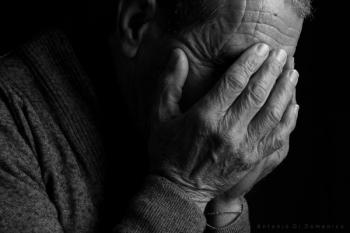
- Vol 31 No 4
- Volume 31
- Issue 4
Ketamine Anesthesia for Electroconvulsive Therapy
The authors review the clinical use of ketamine as the anesthetic induction agent in ECT and discuss the evidence that it augments antidepressant response and reduces cognitive adverse effects.
Ketamine has long been used as an alternative anesthetic agent for ECT. Recently, there has been considerable excitement about its intrinsic antidepressant qualities when given at subanesthetic doses, intravenously or intranasally. We review the clinical use of ketamine as the anesthetic induction agent in ECT and discuss the evidence that it augments antidepressant response and reduces cognitive adverse effects.
The usual ECT anesthetics
Modern ECT practice involves full, albeit brief, general anesthesia, hyperventilation with oxygen, and muscle relaxation with succinylcholine. Anesthesia technique is intimately related to the quality of ECT, not only from the standpoint of patient comfort and safety, but also because the quality and effectiveness of the seizure are affected by the anesthetic agent and airway management.
The most commonly used induction agents in the US are methohexital and propofol. Sodium thiopental, etomidate, and ketamine are less commonly used alternatives. Many anesthetics are anticonvulsant, including all the barbiturates and propofol. While this is not an optimal characteristic for an ECT induction agent, for the vast majority of patients, both methohexital and propofol are satisfactory choices.
Methohexital is often considered the ECT anesthetic of choice because of its many favorable characteristics: rapid onset, short duration of action, moderate anticonvulsant properties, predictable effectiveness, good hemodymanic profile, and low cost. Unfavorable properties of methohexital include pain on intravenous injection and less “smooth” emergence than with propofol. Methohexital is sufficiently anticonvulsant to be recommended as the agent of choice in terminating prolonged ECT seizures.
Propofol, a milky white solution, has an onset and duration of action similar to that of methohexital, a good hemodynamic profile, and “smoother” emergence, with a lesser incidence of postictal agitation. It is similarly painful on injection but is much more potently anticonvulsant, a property that may make it unsuitable for use in certain patients with high seizure thresholds and/or very short seizures. Several studies have concluded that despite propofol’s anticonvulsant activity, using it for ECT anesthesia does not result in inferior antidepressant outcomes.1,2 Its anticonvulsant property may make propofol a preferred induction agent for young patients receiving ECT.
Thiopental, less commonly used in the US than abroad, is half as potent as methohexital. It has a slower onset of action but a longer duration of action than methohexital. Etomidate is often used when a less anticonvulsant induction agent is preferred or when hemodynamic stability is of primary concern. Disadvantages of etomidate include the potential for repeated doses to cause adrenal suppression and a high incidence of myoclonus during the induction period.
Ketamine
Ketamine has a long history of use as an alternative anesthetic induction agent in ECT when seizure enhancement is desired. More recently, it has been tried with the goals of directly enhancing the antidepressant effect of ECT or reducing cognitive effects.
Ketamine is a “dissociative” anesthetic, a noncompetitive N-methyl-D-aspartate (NMDA) receptor antagonist developed in 1964 as a derivative of phencyclidine. It is currently used either as a drug to induce general anesthesia or as an adjunct to inhaled or infused general anesthetics to provide analgesia for surgery or other painful procedures.
When ketamine is administered as an intravenous bolus dose of approximately 1 mg/kg, peak plasma levels are reached and it reliably induces a state of general anesthesia, typified by unresponsiveness to voice commands or to painful stimulus, usually within 60 to 90 seconds, rarely requiring up to 5 minutes. Nystagmus is a key physical sign induced by ketamine, which may help establish depth of anesthesia during a ketamine induction. The ECT team should be prepared to wait longer for the patient to become fully unconscious with ketamine than with methohexital; the time of injection of the succinylcholine may also have to be delayed. In addition to its NMDA effects, ketamine causes a moderate sympathomimetic action via increased catecholamine release and decreased reuptake, resulting in tachycardia and hypertension.
For patients who cannot tolerate the clinical effects of ketamine, the ketamine and propofol combination drug, colloquially referred to as “ketofol” may be more appropriate. By administering propofol and ketamine simultaneously, less of each agent is required to induce general anesthesia. The simultaneous use of these two medications allows for the capitalization on the different therapeutic and adverse-effect profiles of each: ketamine’s proconvulsant effect, and possible antidepressant effect, and propofol’s smoother induction and wake-up properties, as well as its ability to counteract the hypertension caused by ketamine. A lower dose of propofol reduces the potential negative impact on seizure elicitation.
Seizure enhancement with ketamine
While Rasmussen and colleagues3 found no seizure-enhancing effect of ketamine (dose range, 1 to 3 mg/kg) in a case series of 10 patients, Krystal and colleagues,4 in a study that compared ketamine with methohexital, found that ketamine (mean dose, 1.3 mg/kg) increased seizure duration in 30 of 36 patients, and it also increased midictal amplitude of the EEG. One patient in whom a seizure could not be elicited with methohexital had a seizure when ketamine was used.
In a retrospective chart review that included 16 patients who received ketamine, no difference in seizure duration was found.5 However, ketamine resulted in higher concordance (the ratio of motor seizure duration to EEG seizure duration), a possible marker of seizure quality. Similarly, there was no increase in seizure duration in 22 patients treated with 0.5 mg/kg of ketamine (versus saline placebo) added to thiopentone anesthesia.6 Nor were there differences in seizure threshold or duration in 16 patients given 0.4 mg/kg of S-ketamine (versus saline placebo) added to propofol anesthesia.7
In a study that compared the effects of thiopental with those of ketamine, Yoosefi and colleagues8 found longer seizure duration and less electrical charge needed for patients who were treated with 1 to 2 mg/kg of ketamine. Results from a recent study by Rasmussen and colleagues9 showed that patients who received 1 mg/kg of ketamine had longer motor seizure duration than patients who received methohexital.
A large retrospective chart review compared ECT seizure quality induced by ketamine, thiopental, etomidate, and propofol. Findings indicate that compared with propofol or thiopental, ketamine and etomidate induced higher-quality seizures.10
Cognitive enhancement
Ketamine has also been used for ECT anesthesia in an attempt to decrease cognitive effects. Post-ECT reorientation times were shorter in patients who received ketamine than in those treated with methohexital.4 There was less initial decline in Mini-Mental State Examination (MMSE) scores and greater final improvement in patients treated with ketamine than in those treated with thiopentone.8 After 6 sessions of ECT, patients who received 1 mg/kg of ketamine were able to recall words better than those who received etomidate.11
However, when ketamine 0.5 mg/kg (versus saline placebo) was added to thiopentone or propofol, no cognitive advantage was seen on a fairly extensive neuropsychological test battery in 22 patients.6 In addition, there were no differences in MMSE or post-ECT reorientation scores between ketamine and methohexital.9
Antidepressant effect
The recent excitement about the intrinsic antidepressant properties of ketamine, a result of pioneering work by groups from the NIMH, Yale, and the Icahn School of Medicine at Mount Sinai, has led to the reexamination of whether this phenomenon might be synergistic with ECT. Marked immediate mood improvement was reported in a patient who received ketamine anesthesia for ECT, in whom the first 2 sessions failed to elicit a seizure.12 Similarly, a dramatic mood improvement was seen in a patient after a single ECT procedure preceded by a sedating dose of intramuscular ketamine.13
Okamoto and colleagues14 reported a statistically significant greater decrease in Hamilton Depression Rating Scale (HAM-D) scores after the fourth ECT session in 11 patients treated with ketamine versus propofol, but this advantage was gone by the end of the ECT course. In an unusual study design in which patients received a single ECT and were then observed for a week, statistically significantly greater decreases in HAM-D scores at days 1, 2, and 3 were reported for patients who received ketamine alone or ketamine plus propofol than for those who received propofol alone.15,16 But the advantage was gone by the end of the week.
Patients treated with ketamine 0.5 mg/kg (versus saline placebo) added to thiopentone or propofol had a modest increase in antidepressant effect over the first week, but not after the overall course.6 Abdallah and colleagues17 reported that 0.5 mg/kg of ketamine added to thiopental did not result in enhanced antidepressant effect compared with thiopental anesthesia alone. Similarly, no antidepressant advantages were seen when S-ketamine was added to propofol.7
Early antidepressant response was seen in patients treated with ketamine versus thiopental, but this difference had disappeared by the end of the ECT course.8 Finally, Rasmussen and colleagues9 failed to show any enhanced antidepressant response in patients treated with ketamine compared with those treated with methohexital.
Conclusions
A substantial body of clinical evidence supports the overall safety and tolerability of ketamine as an alternative anesthetic induction agent for ECT. Although there is a greater incidence of hypertension and dissociative/hallucinatory effects, these are manageable and not sufficiently common to be serious impediments to its use.
There is general agreement that ketamine is either less anticonvulsant than methohexital and propofol, or even slightly pro-convulsant, and therefore has a role in seizure enhancement for ECT patients with high seizure thresholds, very short seizures, or poor seizure expression.
Most puzzling, and frankly disappointing, is the failure to demonstrate any more than a modest additive antidepressant effect when combined with ECT. Partly, this may be due to a “ceiling effect,” in which the antidepressant effect of ECT is so potent, it is hard to show dramatic improvement. Theoretically, if ketamine and ECT were to have identical mechanisms of action on the glutamate system, it would be unrealistic to expect huge synergism, again because of the potency of ECT. Another possibility is that the dose range of ketamine when used as the sole induction agent for ECT, typically twice that of ketamine infusions for depression, is not in the optimal range for antidepressant effect, although some ECT studies have used comparable doses.
Finally, it must be stated that, the above research notwithstanding, there has yet to be a large-scale, methodologically rigorous clinical trial of ketamine anesthesia in ECT. There are signals of enhanced antidepressant efficacy and decreased cognitive effects. There are many theoretical reasons why this combination should work well. Future research may guide how to best synergize the effects of ECT and ketamine.
Disclosures:
Dr Kellner is Professor of Psychiatry and Dr Bryson is Associate Professor of Anesthesiology and Associate Professor of Psychiatry at the Icahn School of Medicine at Mount Sinai in New York. The authors report no conflicts of interest concerning the subject matter of this article.
References:
1. Mårtensson B, Bartfai A, Hallén B, et al. A comparison of propofol and methohexital as anesthetic agents for ECT: effects on seizure duration, therapeutic outcome, and memory. Biol Psychiatry. 1994;35:179-1 89.
2. Vaidya PV, Anderson EL, Bobb A, et al. A within-subject comparison of propofol and methohexital anesthesia for electroconvulsive therapy. J ECT. 2012;28:14-19.
3. Rasmussen KG, Jarvis MR, Zorumski CF. Ketamine anesthesia in electroconvulsive therapy. Convuls Ther. 1996;12:217-223.
4. Krystal AD, Weiner RD, Dean MD, et al. Comparison of seizure duration, ictal EEG, and cognitive effects of ketamine and methohexital anesthesia with ECT. J Neuropsychiatry Clin Neurosci. 2003;15:27-34.
5. Kranaster L, Kammerer-Ciernioch J, Hoyer C, Sartorius A. Clinically favourable effects of ketamine as an anaesthetic for electroconvulsive therapy: a retrospective study. Eur Arch Psychiatry Clin Neurosci. 2011;261:575-582.
6. Loo CK, Katalinic N, Garfield JB, et al. Neuropsychological and mood effects of ketamine in electroconvulsive therapy: a randomised controlled trial. J Affect Disord. 2012;142:233-240.
7. Järventausta K, Chrapek W, Kampman O, et al. Effects of S-ketamine as an anesthetic adjuvant to propofol on treatment response to electroconvulsive therapy in treatment-resistant depression: a randomized pilot study. J ECT. 2013;29:158-161.
8. Yoosefi A, Sepehri AS, Kargar M, et al. Comparing effects of ketamine and thiopental administration during electroconvulsive therapy in patients with major depressive disorder: a randomized, double-blind study. J ECT. 2014;30:15-21.
9. Rasmussen KG, Kung S, Lapid MI, et al. A randomized comparison of ketamine versus methohexital anesthesia in electroconvulsive therapy. Psychiatry Res. 2014;215:362-365.
10. Hoyer C, Kranaster L, Janke C, Sartorius A. Impact of the anesthetic agents ketamine, etomidate, thiopental, and propofol on seizure parameters and seizure quality in electroconvulsive therapy: a retrospective study. Eur Arch Psychiatry Clin Neurosci. 2013;264:255-261.
11. McDaniel WW, Sahota AK, Vyas BV, et al. Ketamine appears associated with better word recall than etomidate after a course of 6 electroconvulsive therapies. J ECT. 2006;22:103-106.
12. Ostroff R, Gonzales M, Sanacora G. Antidepressant effect of ketamine during ECT. Am J Psychiatry. 2005;162:1385-1386.
13. Goforth HW, Holsinger T. Rapid relief of severe major depressive disorder by use of preoperative ketamine and electroconvulsive therapy. J ECT. 2007;23:23-25.
14. Okamoto N, Nakai T, Sakamoto K, et al. Rapid antidepressant effect of ketamine anesthesia during electroconvulsive therapy of treatment-resistant depression: comparing ketamine and propofol anesthesia. J ECT. 2010;26:223-227.
15. Wang X, Chen Y, Zhou X, et al. Effects of propofol and ketamine as combined anesthesia for electroconvulsive therapy in patients with depressive disorder. J ECT. 2012;28:128-132.
16. Kellner CH, Briggs MC, Pasculli RM, Bryson EO. Antidepressant effect of the first electroconvulsive therapy with ketamine and/or propofol. J ECT. 2013;29:149.
17. Abdallah CG, Fasula M, Kelmendi B, et al. Rapid antidepressant effect of ketamine in the electroconvulsive therapy setting. J ECT. 2012;28:157-161.
Articles in this issue
over 11 years ago
Tips for Conducting Disability Evaluationsover 11 years ago
Pain, Opioids, and Psychiatristsover 11 years ago
Chronic Traumatic Encephalopathy: Should We Be Worried?over 11 years ago
Epilepsy and Seizures: Neuropsychiatric Implicationsover 11 years ago
Management of Psychosis in Parkinson Diseaseover 11 years ago
Computerized Neurocognitive Tests in Clinical Practiceover 11 years ago
What Is the Role of Vitamin D in Depression?over 11 years ago
Clinical Assessment of Dysexecutive Syndromesover 11 years ago
Creativity and Mental IllnessNewsletter
Receive trusted psychiatric news, expert analysis, and clinical insights — subscribe today to support your practice and your patients.

















